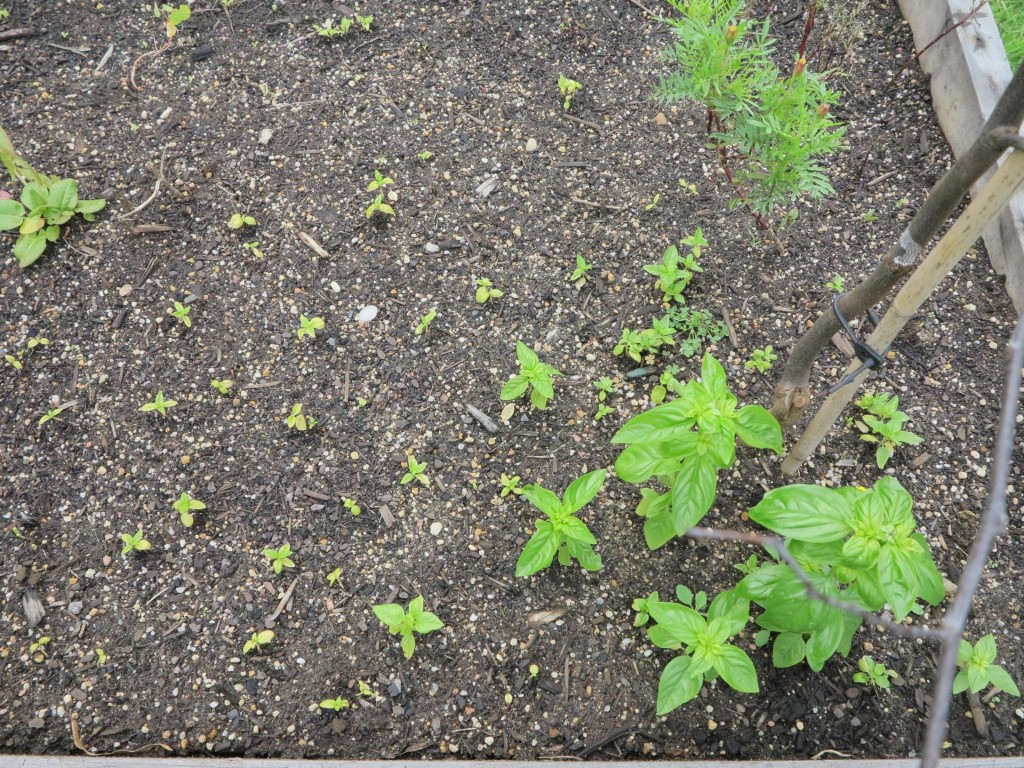With only a handful of plants actively rejecting their installation at the Farm (or not receiving enough love from us, perhaps), most of the bad flowers in the garden have taken root. That said, growing is slow for some of these malicious magnoliophyta, given the dry Autumn we had in Sydney and the ever-shorter and cooler days we are getting as we head into Winter.
In this regard, the responsibility for tending a garden artwork is a kind of nightmare for an aesthete. This is largely because, beyond watering them and the odd dose of fertiliser, one has very little control over the plants themselves. They have minds of their own; a statement we perhaps should understand literally, by taking a leaf out of Michael Marder’s new book Plant-thinking: A Philosophy of Vegetal Life, in which he uses plant life to deconstruct the tradition of western metaphysical thought and encourages us to rethink the lively agency of plants (listen to Marder summarise his argument on RN’s The Philosopher’s Zone if you’re interested).
What brings the plants together in the installation are their negative historical meanings from in the European and British tradition of Floriography in the 18th and 19th centuries. The plants themselves, however, do not identify in this way. This means that the plants do not willingly live in accordance with the aesthetic desires of the artist (de Vietri) and the artist’s helpers (us at the Farm). We desire an abundant and beautiful garden that surprises the audience by being a pleasant aesthetic experience and yet at the same time signifying things like perversity and horror. But the garden’s abundance is patchy at best. This is largely because the desired abundance in the garden is developing unevenly and at a radically different pace to the events and open days we are having to exhibit these plants and their negative significances.
For example, of the 30+ basil seedlings planted for the garden, only three have developed into proper plants beyond their emergent growth. Although we planted at the end of basil-season, we aimed for a sunny spot. This spot, we now realise, is still too shady for most of the little ones to grow into the plants we had hoped them to be. Two very lucky plants and a few other side-kicks happen to get a bit more sunlight than their siblings because of a surprising gap in the foliage of one of the trees on the western side of the yard; the ones with accidental access to the most sun have grown to about 50cms, the other two are about 20cms. But the rest are waiting patiently in the cold wintry soil for the earth to move around the sun, for the south pole to be pointed toward its rays and the antipodean days to grow longer once more, giving them more light to make into food, so they can grow. Abundance will come, but not until next Summer.
 In some ways the plant-artwork reveals the gap in the meanings that flowers have been awarded by humans and the meanings plants generate for themselves by gathering nutrients from the sun and growing into larger plants. But despite the slight departure from the intended aesthetic experience because of the pace of growth over the colder months, this material fact also gives the “bad” in the Garden of Bad Flowers an added significance. Where as “bad” previously referred to the human meanings given to the plants, some of the flowers are now bad in the sense of disobedient and disruptive, like bad kids in the playground refusing the play by the rules. But they are not just “bad apples”, or exceptions to the rule. Rather they are more like exceptions that prove the rule; to make artwork with living plants that at the same time adheres to our aesthetic desires, we cannot just turn to the history books for our ideas, but rather we have to collaborate with the plants themselves and give them a role in shaping the artwork. For, as this bad basil has shown us, they do so anyway.
In some ways the plant-artwork reveals the gap in the meanings that flowers have been awarded by humans and the meanings plants generate for themselves by gathering nutrients from the sun and growing into larger plants. But despite the slight departure from the intended aesthetic experience because of the pace of growth over the colder months, this material fact also gives the “bad” in the Garden of Bad Flowers an added significance. Where as “bad” previously referred to the human meanings given to the plants, some of the flowers are now bad in the sense of disobedient and disruptive, like bad kids in the playground refusing the play by the rules. But they are not just “bad apples”, or exceptions to the rule. Rather they are more like exceptions that prove the rule; to make artwork with living plants that at the same time adheres to our aesthetic desires, we cannot just turn to the history books for our ideas, but rather we have to collaborate with the plants themselves and give them a role in shaping the artwork. For, as this bad basil has shown us, they do so anyway.